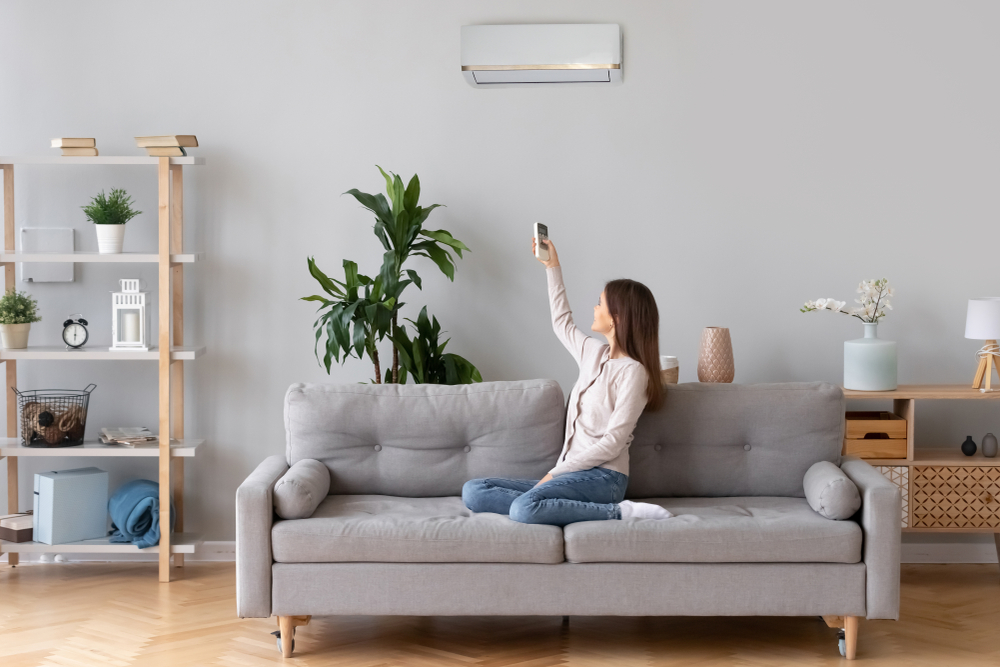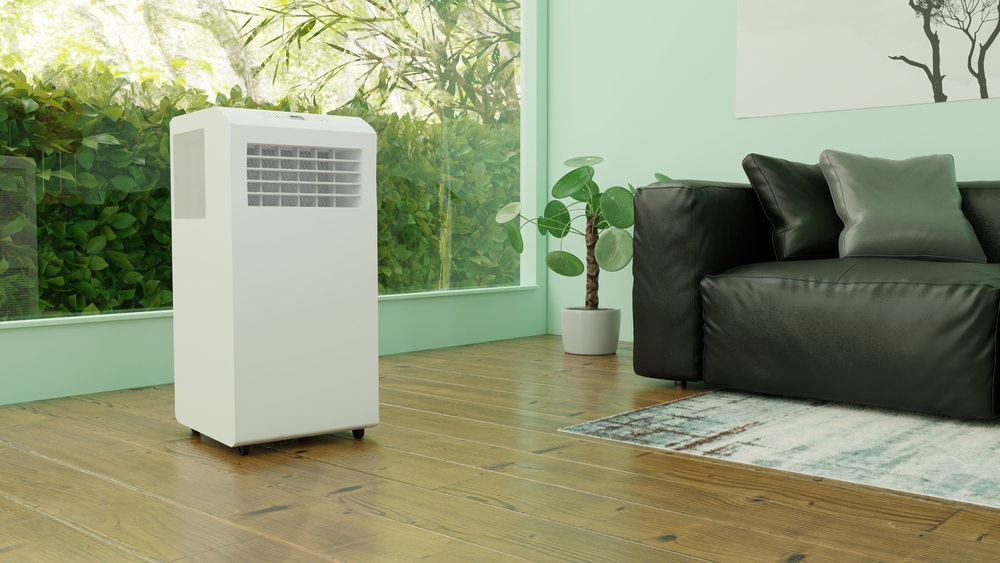Is an Energy-Efficient Portable AC Unit a Cool and Efficient Solution?
Summer months can be sweltering in parts of the country. The extreme heat could put more pressure on an HVAC system. To save energy and money, homeowners might adjust the thermostat to a warmer temperature. Unfortunately, some rooms might get hotter than others.
How do homeowners cool warmer spaces without lowering their thermostat? An energy-efficient portable AC unit can help rooms stay cooler, but they might not be the most energy-efficient air conditioner.

There are Different Types of Small AC Units
There are different types of smaller AC units. Some could be installed in a window and are more permanent options. Others might be portable and sit on the floor of a room; these units are convenient because they are not designed to be permanent appliances.
For example, a central air conditioning system is installed in the home and isn’t made to be portable. Instead, the system uses the air ducts in the home to send cold air to each room.
Central AC systems are controlled by a thermostat. More modern systems can include a smart thermostat that allows the homeowner to program different settings throughout the day. While at work, the home might be warmer. Later, the system might be set at a cooler temp, and another program might increase the temperature at night.
Smart systems let homeowners take control of their energy use and they can help decrease inefficient cooling patterns. Older systems without programming functions often require the homeowner to remember to manually adjust the temperature setting during the workday to ensure that the system runs more efficiently.
Unfortunately, busy homeowners might not always remember to adjust these settings. They might find a higher energy bill for increased cooling costs that were the result of a system set too cool during times the family wasn’t even at home.
Smaller AC units also offer temperature controls. Some room air conditioners also meet the energy-efficiency standards to earn an ENERGY STAR label. These units are designed with enhanced insulation and seals.
The units that include the ENERGY STAR label are designed to either fit through the wall or in the window. These AC units are not portable. However, homeowners can find AC units in a variety of price points.

Is a Portable AC Unit the Most Efficient Option?
Homeowners who want a portable air conditioning unit to cool off a warm room in the home should choose a model that is ideal for the size of their room. However, these portable units will not include an ENERGY STAR label as portable air conditioners “…are not ENERGY STAR certified products”
While portable AC units could be a convenient cooling option, they might not be the most energy-efficient solution—especially since they aren’t eligible for the ENERGY STAR label. If a room in the home feels warmer than other spaces, homeowners might research underlying causes like:
- Poor insulation (walls or attic)
- Older windows or poorly insulated windows
- Poor air circulation (check the vents)
Instead of adding another energy-consuming appliance, homeowners can fix the underlying issue to ensure that their home stays cool and doesn’t heat up the energy bill. If homeowners suspect that insulation is an issue, they should call a professional for an inspection.
In some cases, a vent might be closed. This could lead to the home not being cooled like the rest of the home. Check the vents to ensure that air is properly circulating in each room of the home.
Some homes might not be integrated with central air conditioning. Older homes might not include this modern cooling feature. Homeowners could use energy-efficient window or wall units to keep their home cool during the summer. Again, these units include the ENERGY STAR label.
Other Ways to Cool Down
Sometimes the heat is so extreme that homeowners can’t seem to keep the home cool enough. To take a bit of pressure from the HVAC unit, homeowners can add exterior awnings to windows to keep the sun from heating up a room.
In addition, blackout curtains are a relatively inexpensive way to keep the sun’s hot rays from warming up the home. Homeowners can even make their own blackout curtains.
If windows don’t have any air leaks but are older and less energy efficient, a film material can be installed to add insulation to these older windows. This could help keep a room cooler during hotter days.
Still, homeowners might find that they want to cool down a room quickly. When used as a short-term solution, a portable AC unit could help cool a space. To save energy and money, homeowners might find the underlying cause of the extra heat. Fixing an underlying issue will save more energy and money in the long run.


